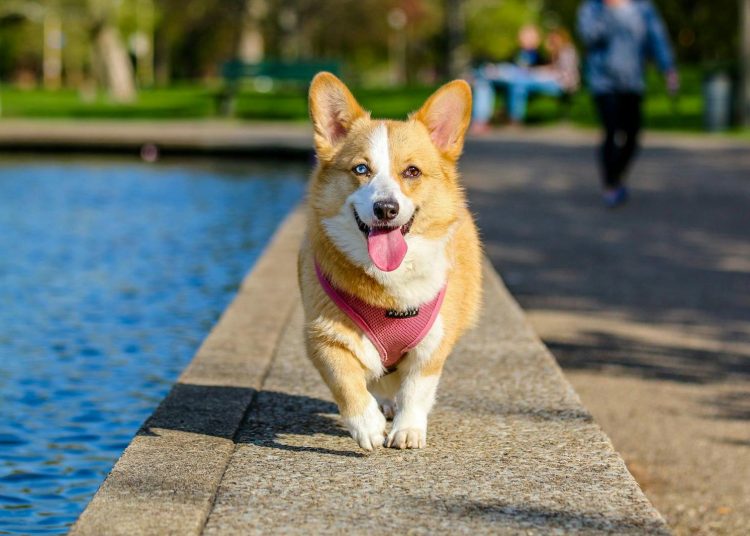When it comes to pet care, dental hygiene often doesn’t get the attention it deserves. However, just like humans, pets need regular dental care to prevent issues like bad breath, gum disease, and even systemic health problems. A proper tooth brushing routine can make all the difference in your pet’s well-being, leading to a happier, healthier life. Here, we provide a practical guide for brushing your pet’s teeth, offering best practices, tips, and strategies to make it a positive experience for both you and your furry friend.
1. Understanding the Importance of Pet Dental Care
Dental health is often overlooked in pets, yet it’s a critical component of their overall health. Poor dental hygiene can lead to plaque buildup, bad breath, and eventually gum disease—a painful condition that can impact your pet’s ability to eat comfortably. In severe cases, bacteria from the gums can enter the bloodstream and cause issues in other organs, such as the heart and kidneys.
Regularly brushing your pet’s teeth is the most effective way to prevent dental problems. It helps reduce plaque and tartar buildup, keeping their gums healthy and teeth strong. Starting a dental care routine early in your pet’s life is ideal, but even adult pets can learn to tolerate, or even enjoy, having their teeth brushed.
2. Choosing the Right Tools
The first step in creating a successful tooth brushing routine is to gather the right tools. It’s important to use products specifically designed for pets, as human toothpaste contains ingredients like fluoride, which can be toxic to pets.
- Pet Toothpaste: Pet toothpaste is formulated with flavors that pets love, such as poultry or peanut butter, making the experience more enjoyable. The enzymatic formulas help break down plaque and reduce bacteria even if your pet doesn’t allow a thorough brushing.
- Pet Toothbrush: A toothbrush designed for pets typically has soft bristles and an angled head that makes it easier to reach all areas of your pet’s mouth. You can also use finger brushes, which slip over your finger and provide more control—especially useful for pets who are hesitant about brushing.
- Dental Wipes: If your pet is particularly resistant to brushing, dental wipes can be an alternative. They are less effective than a brush but can still help remove some plaque and freshen your pet’s breath.
3. Gradual Introduction to Tooth Brushing
Introducing your pet to tooth brushing can be a gradual process, especially if they are new to the idea. To help your pet get comfortable, start by simply getting them used to having their mouth touched. Gently lift their lips and rub their teeth and gums with your finger. Doing this for a few minutes each day will help them get used to the sensation.
Once your pet is comfortable with you handling their mouth, introduce the toothpaste by allowing them to lick a small amount off your finger. The appealing flavor can help create a positive association with tooth brushing. After they’re used to the toothpaste, let them get used to the toothbrush or finger brush by letting them sniff it and lick some toothpaste from the bristles.
4. Step-by-Step Tooth Brushing Technique
Brushing your pet’s teeth effectively requires patience and the right technique. Follow these steps to ensure a positive experience:
- Step 1: Prepare the Area: Find a quiet space where your pet feels comfortable. It’s best to choose a time when they’re relaxed, such as after a meal or exercise.
- Step 2: Position Your Pet: Position your pet so they feel secure. For small pets, placing them in your lap can work well, while larger pets may need to sit beside you on the floor. Make sure you have easy access to their mouth without causing them to feel restrained.
- Step 3: Apply Toothpaste: Put a small amount of pet toothpaste on the brush. Remember, a little goes a long way, and it’s the brushing action that does most of the work.
- Step 4: Start Slowly: Begin by brushing the outer surfaces of your pet’s teeth, as these areas tend to accumulate the most plaque. Use gentle, circular motions and focus on just a few teeth at a time. Start with short sessions, around 30 seconds, gradually increasing as your pet becomes more comfortable.
- Step 5: Reward Your Pet: After each session, reward your pet with praise, treats, or playtime to reinforce the positive experience. This will help them develop a positive attitude towards tooth brushing and make it easier over time.
5. Frequency of Brushing
Ideally, you should aim to brush your pet’s teeth every day to prevent plaque buildup and maintain good oral hygiene. However, if daily brushing isn’t possible, even brushing a few times a week can significantly improve your pet’s dental health.
The more frequently you brush your pet’s teeth, the easier it will be for them to get used to it. Establishing a routine and keeping the sessions short and positive can make brushing a natural part of your pet’s daily care.
6. Overcoming Challenges
It’s common to face challenges when brushing your pet’s teeth, especially if they are not used to having their mouth handled. Here are a few tips to help overcome some of the common difficulties:
- Start Young: If possible, introduce tooth brushing when your pet is still a puppy or kitten. Younger pets are often more adaptable and can become accustomed to brushing quickly.
- Use Positive Reinforcement: Always use positive reinforcement, such as treats or verbal praise, to help your pet associate brushing with positive experiences.
- Stay Calm and Patient: Pets can sense your emotions, so if you are anxious, they will be too. Stay calm and be patient, even if your pet initially resists. It may take several weeks for them to become comfortable with the routine.
- Short Sessions: Don’t try to brush all of your pet’s teeth at once if they are not comfortable. Start with just a few teeth, and gradually increase the amount over time.
7. Signs of Dental Issues
Brushing your pet’s teeth regularly can help prevent many dental problems, but it’s still important to watch for signs of potential issues. Symptoms such as bad breath, excessive drooling, difficulty eating, or visible tartar buildup may indicate dental problems that need professional attention. If you notice these signs, schedule a visit with your veterinarian for a thorough dental examination.
8. Alternative Dental Care Options
While tooth brushing is the gold standard for pet dental care, there are other options that can complement brushing or be used in cases where brushing isn’t possible. These include:
- Dental Treats and Chews: Dental treats and chews are designed to help reduce plaque and tartar buildup. They can be a useful supplement to brushing but shouldn’t replace it.
- Dental Toys: Chewing on dental toys can help scrape away plaque and keep your pet’s teeth cleaner. Look for toys specifically designed for dental health to get the most benefit.
- Water Additives: Dental water additives can help reduce plaque and freshen your pet’s breath. They are a convenient option for pets who are resistant to brushing, although they are not as effective as direct brushing.
- Professional Dental Cleanings: Regular veterinary dental cleanings are important for maintaining your pet’s oral health, especially if there is significant plaque or tartar buildup. Your vet can provide a thorough cleaning under anesthesia, ensuring that all areas of your pet’s mouth are addressed.
9. The Benefits of a Healthy Smile
Maintaining your pet’s dental hygiene provides benefits that go beyond their mouth. A healthy mouth contributes to your pet’s overall well-being, helping to prevent pain and discomfort caused by dental disease. Pets with good dental health tend to have fresher breath, enjoy their meals more, and may even live longer lives.
Brushing your pet’s teeth regularly can also save you money in the long run. Preventive care reduces the likelihood of expensive dental treatments or surgeries due to neglected oral health. In addition, it gives you a chance to bond with your pet, turning what might seem like a chore into a special moment of care and connection.
Dental care for pets is an essential part of ensuring their quality of life. While it may take time and patience to establish a brushing routine, the rewards are well worth the effort. With the right tools, a positive approach, and dedication, brushing your pet’s teeth can become a manageable and even enjoyable part of your pet care routine. Your pet’s bright smile and healthy mouth will thank you for years to come.








